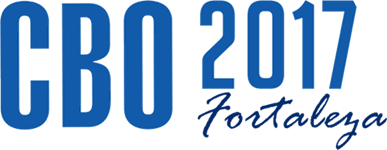
Sessão de Encontro com o Autor – Tema Livre
Código
TL004
Área Técnica
Córnea
Instituição onde foi realizado o trabalho
- Principal: Universidade Federal de São Paulo (UNIFESP)
- Secundaria: University of Zurich
Autores
- EMILIO DE ALMEIDA TORRES NETTO (Interesse Comercial: NÃO)
- SABINE KLING (Interesse Comercial: NÃO)
- FARHAD HAFEZI (Interesse Comercial: NÃO)
Título
LONGER IRRADIATION TIME INCREASES THE BIOMECHANICAL STIFFENING WITH IONTOPHORESIS-ASSISTED TRANSEPITHELIAL CROSS-LINKING
Objetivo
Transepithelial corneal cross-linking has been proposed as a technique to reduce the postoperative time to healing and the risk of corneal infection, but has shown rather disappointing clinical results. This might be due to 1) insufficient riboflavin penetration and 2) insufficient oxygen diffusion. Iontophoresis-assisted transepithelial CXL (I-CXL) may help to improve riboflavin diffusion into the stroma, but does not influence the speed of oxygen diffusion. The latter might be influenced by slowing the CXL irradiation settings, so that sufficient amounts of oxygen can re-diffuse and maintain the cross-linking process. We tested this hypothesis in ex vivo porcine corneas.
Método
112 porcine corneas were divided into 7 groups. Different intensity/time settings of irradiation were performed: 3 groups had epi-off corneal cross-linking (CXL) and 4 groups had I-CXL (controls included). Young's modulus and stress after relaxation of 5-mm wide corneal strips were analyzed as an indicator of corneal stiffness.
Resultado
Among the groups that had I-CXL, stress differences at the end of the relaxation curve were observed between 9mW/cm2 for 10 minutes and 1.5mW/cm2 for 60 minutes (p=0.03), with the latter presenting greater stiffening. Stress was also significantly increased in both conditions submitted to CXL with epithelial removal: 3mW/cm2 for 30 minutes (p<0.001) and 9mW/cm2 for 10 minutes (p=0.03). Young's modulus at 10% strain showed only significant differences between some groups of epithelium-off (CXL): control and both 3mW/cm2 for 30 minutes (p=0.02) and 9mW/cm2 for 10 minutes (p = 0.01).
Conclusão
The biomechanical effect of I-CXL increased when using a low irradiance/long irradiation time setting, doubling the time of the Dresden protocol. Although clinically rapid protocols are desired, longer irradiation are needed in order to increase I-CXL efficiency.












